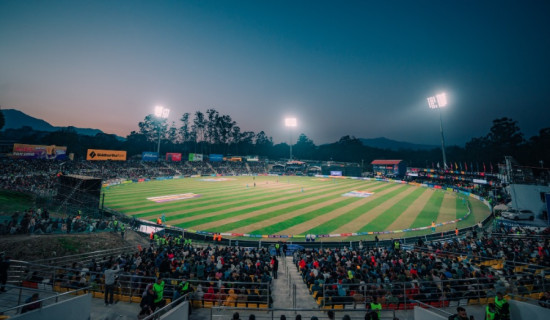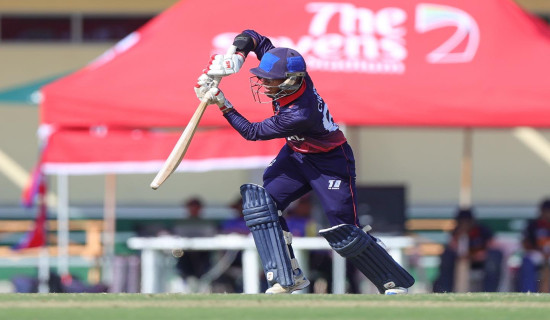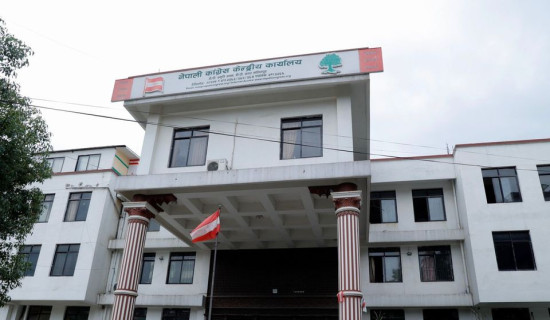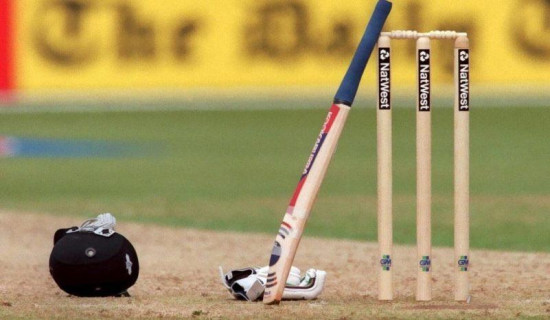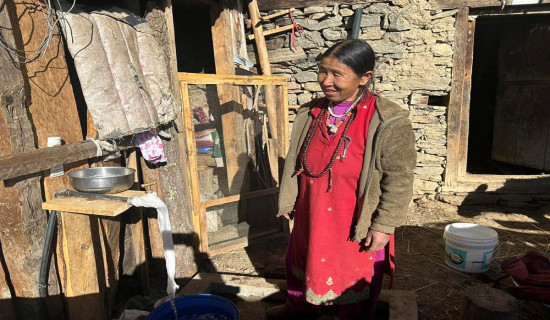- Monday, 15 December 2025
Unified Socialist Convention
Small Size, Colossal Contest
Despite being a small party, CPN-Unified Socialist is set for a big fight among its leaders for the top post in its upcoming convention to be held on June 30-July 4. This is the party's first convention after its split from the CPN-UML three years ago. But the party is terming it 10th convention, stating that it has been reorganised by revolting against the UML leadership. It has given the example of the then CPN-Marxist-Leninist (ML), the predecessor of the UML, which held the 4th convention after its formation, not the first, to claim the legacy of Nepal Communist Party established in 1949. The ML that was formed taking inspiration from Jhapa peasant revolt emerged as the powerful communist party in the country. However, the Unified Socialist is still struggling to become a political force to be reckoned with, despite playing a crucial role in putting the nation on the due constitutional course.
Ahead of the national conclave, the party has resolved its ideological dispute. Now its karyadisha (tactics) is socialism, and Marxism-Leninism the guiding principle. It has set scientific socialism with Loktantrik (democratic) values and norms as rananitik lakshya (strategic goal). In communist parlance, tactics implies political programmes that the communist party pursues to achieve strategic goals. Party chair Madhav Kumar Nepal had been advocating that janatako bahudaliya janabad (people’s multiparty democracy-PMD) should be the tactical line of the party but he has dropped PMD as the convention nears.
Ideological dispute
The ideological discourse has been the cornerstone of communist parties all over the world. The discord on ideology generates two-line struggle in them. This disagreement sometime results in the split of the parties. However, in most of times, the ideological differences paper over the personality clashes, egos and vendetta, leading to intense quarrels and eventual disintegration of the parties and the communist movements. Nepali communist movement is the testimony of this fact as there are more than a dozen communist parties operating in the country.
With the adoption of ‘socialism’ as the tactical line, the Unified Socialist has differentiated itself from its parent party – UML – that has made PMD as it guiding theory. Most of the content of PMD, propounded by late Madan Bhandari – has been incorporated in the new constitution promulgated in 2015. Unified Socialist’s respected leader Jhalanath Khanal and general secretary Ghanshyam Bhusal have been advocating this line of thought in the party. The fifth convention of the party had decided to accept PMD as its political programme but later it was taken as an ideology.
It has been believed that Nepal, a staunch exponent of PMD, embraced socialism as the party’s tactical policy with a view to stake claim to the post of chairman. In his political report to be presented in the convention, Nepal said that late Bhandari had played an important role in democratising and expanding Nepali communist movement. Without extolling Bhandari, it is difficult to win the hearts of many leaders and cadres who venerate him for shaping and consolidating the party. With the ideological issue sorted out, Nepal aims to be a consensus leader of the party that is still in the making. However, Khanal and Bhusal have also set sights on the top post.
Khanal has his own argument – jasko niti, usaiko netritwa (the leadership should go to the one whose policy prevails). Khanal, who was the general secretary of the UML twice, has been opposing PMD and pushing for socialism as tactical programme. Khanal calls for the leadership transfer and Bhusal generation transfer in the leadership. Nepal wants to get re-elected to the post of chairman with Bhusal as its general secretary. But there is also internal lobbying to patch up between Khanal and Bhusal against Nepal in case there is no consensus on the key posts.
Of the three leaders, Nepal has greater chance to be the chairman for the second term because he led the revolt and was instrumental in building the new party. When Nepal formed the party, Khanal was in India for health treatment, and Bhusal was still in the UML, refusing to be the part of rebel faction. Bhusal quit the UML after he was denied the ticket in the federal elections in 2022. He contested the polls as an independent candidate with the backing of the then five-party alliance. He joined the Unified Socialist late as other options for his meaningful political engagement were virtually closed. Within a short span of time, he was awarded with the general secretary, with a hope that the party's organisation would gain a new momentum. Had he backed Nepal and Khanal since the time of rebellion, the party could have fared better in the polls.
Tall pledges
Khanal is known for his stance on nationalism, and Bhusal as an ideologue. On the other hand, Nepal is a pragmatic leader still energetic at the age of 71. He has a knack of organising the party and worked his fingers to the bone to bolster his parent party – UML – after the demise of Bhandari. But the seasoned communist leader was unable to make Unified Socialist a national party. Interestingly, the big shots are bracing for colossal clashes that appear to be bigger than the size of the party.
To be participated in by more than 1800 delegates, the convention has picked a slogan of 'Let's protest the rightist status quoism, let's move ahead on the path of socialism'. With over 150,000 members, the Unified Socialist has the challenge to justify its relevance in an unfavourable political situation it is currently facing. In the intra-party instruction, Nepal stated that his party had arrived at a point of formulating the socialist programmes with Nepali characteristics. It is yet to be seen how the party will break the barriers of entrenched neoliberalism and construct a socialist economy. It is easy to make tall claims than fulfil them.
(The author is Deputy Executive Editor of this daily.)









